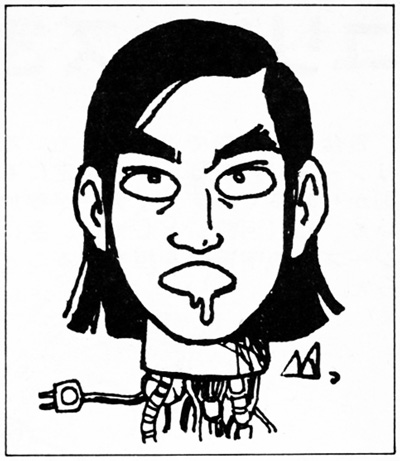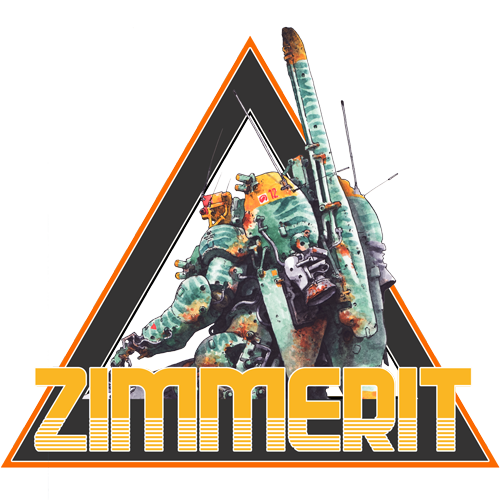For fans of an older generation, the name Studio Nue carried a certain amount of cachet. Founded by author Haruka Takachiho (Crusher Joe, Dirty Pair), writer Kenichi Matsuzaki (Mobile Suit Gundam, Super Dimension Fortress Macross), illustrator Naoyuki Kato (Starship Troopers, Guin Saga), and designer Kazutaka Miyatake (Starship Troopers, Super Dimension Fortress Macross) in 1974, the studio would go on to have a hand in fan favorites like Space Battleship Yamato, Captain Harlock, and a variety of super robot shows before creating the proto-otaku darling, Super Dimension Fortress Macross in 1982.

From designing the iconic power suit used to illustrate the Japanese release of Robert A. Heinlein’s Starship Troopers, to drafting the first transforming robot that didn’t look kinda stupid, Studio Nue’s legacy is nothing short of hugely influential.Their work on Combattler V, Voltes V, Macross and Gundam taught the world to love Japanese robots in an era when model kits and toys were easier to find than the actual cartoons they were based on.
Today, most of the formative personalities of Studio Nue have moved on; either to new studios and new projects or simply retirement. Studio Nue stills exists, albeit in a greatly subdued form, and it’s worked on recent projects like Space Battleship Yamato 2199, Arpeggio of the Blue Steel and Argevollen. But Zimmerit isn’t about the here and now, so instead, let’s take a trip back to 1981, when the original Macross had yet to de-fold and the staff of Studio Nue put together a book of design notes for the magazine Animage.
People of Studio Nue
Haruka Takachiho: Best known authoring both Dirty Pair and Crusher Joe. While in university he co-founded the fan circle “SF Central Art” with Miyatake, Matsuzaki and Kato. Soon after, SF Central Art went pro as Crystal Art Studio, and then reorganized into Studio Nue in 1974.

Kenichi Matsuzaki: A script writer that worked on everything from the original Gundam to Bubblegum Crisis and Zoids Genesis. He contributed to the setting design of Gundam (Studio Nue is credited with the creation of Minovsky Particles, so that was likely Matsuzaki) and was the inspiration for a Macross character you’ve probably never heard of, Kenichi Machizaki. Despite being the number two guy at Nue behind Takachiho, Matsuzaki left after working on Macross.

Kazutaka Miyatake: Changed the game by co-designing the power suit featured in Hayakawa Publishing’s Japanese-language edition of Starship Troopers and later working on mecha for Macross, including the SDF-1 Macross itself. Miyatake has also worked on everything from the Daicon films, to MD Geist II: Death Force, to the recent Yamato 2199.

Naoyuki Kato: Best known for his illustration work on Starship Troopers, Legend of Galactic Heroes, and the Guin Saga novels. Kato is also fondly remembered for his work (check out that rad VHS cover) on the beloved OVA, Roots Search.

Shoji Kawamori: The don of the Macross franchise and mechanical designer for countless series, including Diaclone (which formed the basis of Transformers), Patlabor, Gundam, Cowboy Bebop, and Crusher Joe. Prior to joining Studio Nue, Kawamori worked on the Gundam doujin Gunsight.
The Studio Nue Mascot
The nue was a monster from Japanese mythology, a chimera consisting of the face of a monkey, the legs of a tiger, the body of a tanuki and a snake for a tail. The mascot of Studio Nue is a chimera consisting of the four personal mascots of Nue’s founding members: Takachiho’s snake, Matsuzaki’s cockroach, Miyatake’s tanuki, and Katoh’s vampire bat.

The following translations are from a booklet included with the November, 1981 issue of Animage, titled Mecha Making: Studio Nue Design Notes. The book is a mix of production art created for shows like Ulysses 31 and Captain Harlock, and brief interviews with Nue staff and articles about life in the studio. Most of the text is irreverent, if not downright goofy. Translations are my own, and they may be incorrect or straight rubbish. You’ve been warned.
My comments are in [red].
On The Studio Itself
Nue’s second studio (basically, the one in charge of mecha design) occupies several hundred meters of a film studio’s basement in Shimo-Igusa, Tokyo. If you open the door made of 50cm-thick vanadium steel, there’s a vast kitchen. Cooking on the thermonuclear fusion powered gas stove is Miyatake’s dinner, a sublime turkey steak (70 yen for 100 grams).
Crossing the kitchen takes about half and hour, but that’s because of all the comics and books laying around.
The Desks of Studio Nue
 Kazutaka Miyatake: The first thing you’ve got to know is that the space under his desk is his bedroom and he uses a curtain to block off the outside world. True story.
Kazutaka Miyatake: The first thing you’ve got to know is that the space under his desk is his bedroom and he uses a curtain to block off the outside world. True story.
Shoji Kawamori: It’s under that big stack of paper to the right. In fact, it’s pretty much a storeroom. He’s not working at that desk right now because doing so would be impossible.
Kenichi Matsuzaki: Practically a storeroom. “Practically” because sometimes he still has to use it for writing work.
Naoyuki Kato: At the moment Kawamori’s working there. Hanging up is a picture of Mirai and a bathroom scene from the “White Base Life” section of Gundam Century. [Gundam Century was an A4-sized artbook released by OUT magazine in 1981, featuring artwork and supervision by Studio Nue. Specifically, Kazutaka Miyatake, Shoji Kawamori, and Kenichi Matsuzaki.]
Reserve Desk: We’ve heard this exists somewhere in the studio, because Mr. Miyatake has claimed as much. But if he’s seen it, we sure don’t know where it is.

Shoji Kawamori on Ulysses 31
Because Ulysses 31 was a French-Japanese co-production, a lot of mecha designs were submitted by artists in both countries. I was mainly responsible for the design of the spacecraft.
Kazutaka Miyatake on the Captain Harlock’s Space Wolf
My personal tastes influenced this design. The long nose is a mixture of the Focke [Focke-Wulf Fw 190] and the Corsair [Vought F4U Corsair]. Making use of sharp points, I drew it with a [Leiji] Matsumoto-style.

Gundam Director Yoshiyuki Tomino on Studio Nue
Although I don’t think it’s copying, until now, sci-fi illustration has had sort of an Americanized image. Studio Nue’s colors and characters have showed us new frontiers, so as a fan, I’m grateful.
Kazutaka Miyatake on Techno Police 21
Please don’t expect too much of Tekupori, because the degree of expectation and the level of satisfaction are inversely proportional.
Kazutaka Miyatake on Growing Up in Yokosuka
I spent a lot of time looking at the aircraft carriers Saratoga and Kittyhawk. [Yokosuka is home to a large U.S. naval base.]
Yamato Director Noburo Ishiguro on Studio Nue
While making Yamato, Studio Nue got in contact with us as a mecha design company. Every one of the four founding members was a huge fan of sci-fi. Even though they had to work within the confines of what I was looking for, oddly enough they didn’t seem to think of it as a job. I remember that time as being really enjoyable. Just by looking at their work you, can see its innovative appeal, can’t you?
Gundam Mecha Designer Kunio Okawara on Studio Nue
They’d only just started doing mecha design when they worked on Gatchaman, then one or two years later Studio Nue really made its debut with Zero Tester. Ever since then, I’ve felt they were rivals since we were both doing the same kind of work.
Studio Nue Staff on Black Lion
We handed Black Lion off to Kawamori in the middle of the project. Kawamori had just joined and his lines were very unpolished… In the end, this armor design ended up not being used in the manga

Further Reading
- Zinc Panic – Studio Nue
- CollectionDX.com – Powered Suit Studio Nue Design (Mobile Infantry) [Toy review, but good background on the Starship Troopers power suit design]
- Science Fiction & Fantasy Writers of Japan – Takachiho Haruka
- AnimEigo – SDF Macross Liner Notes

